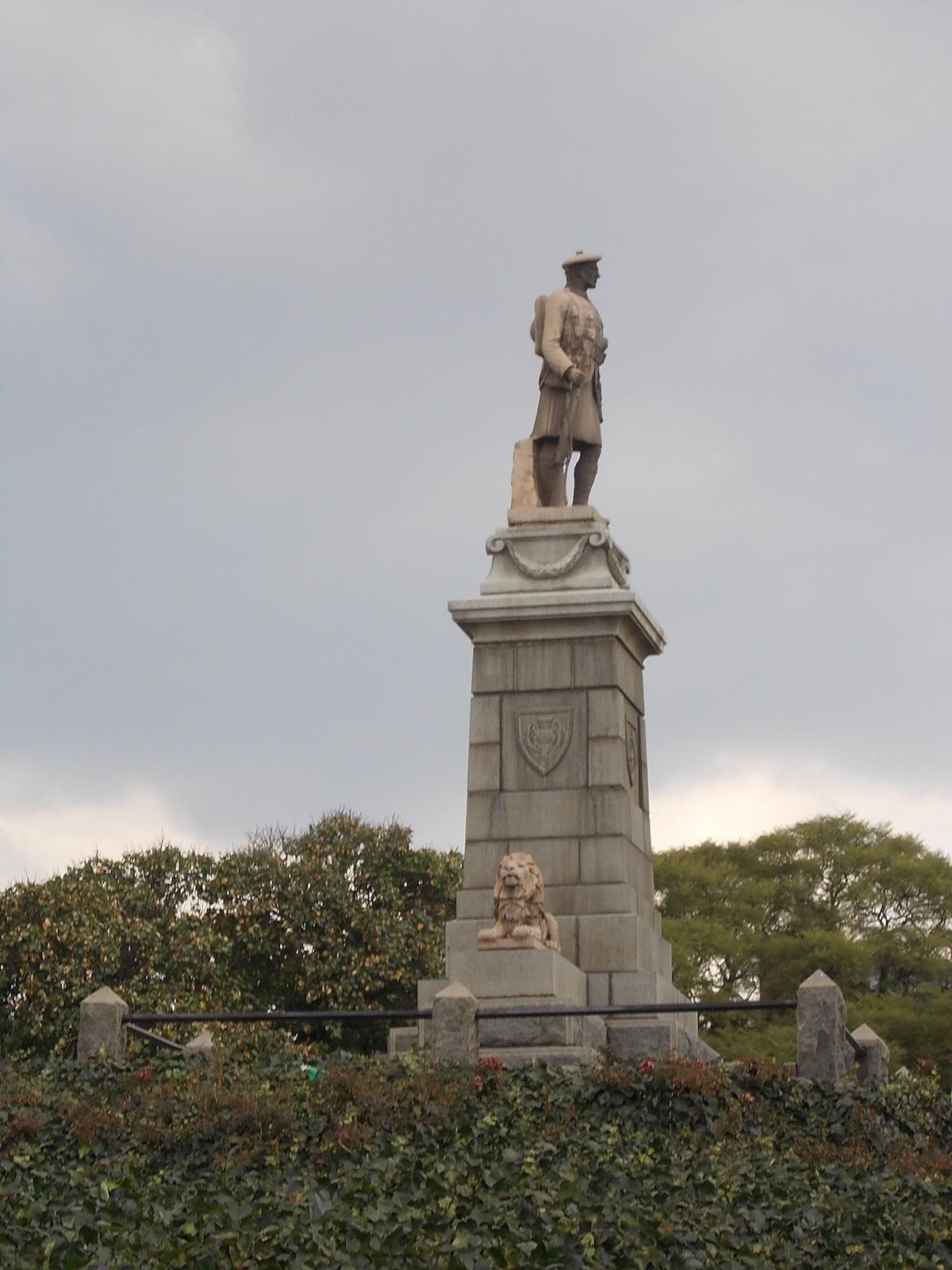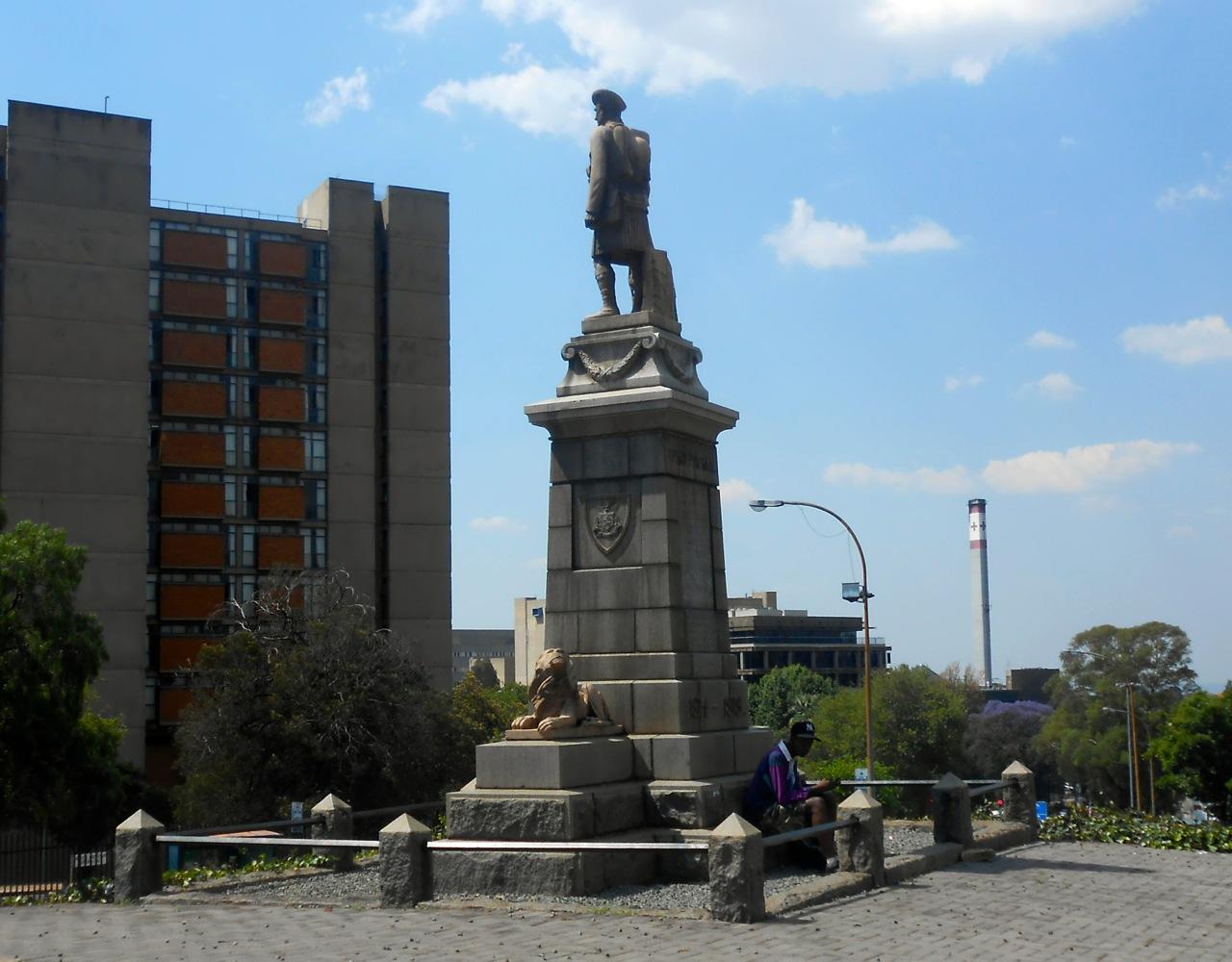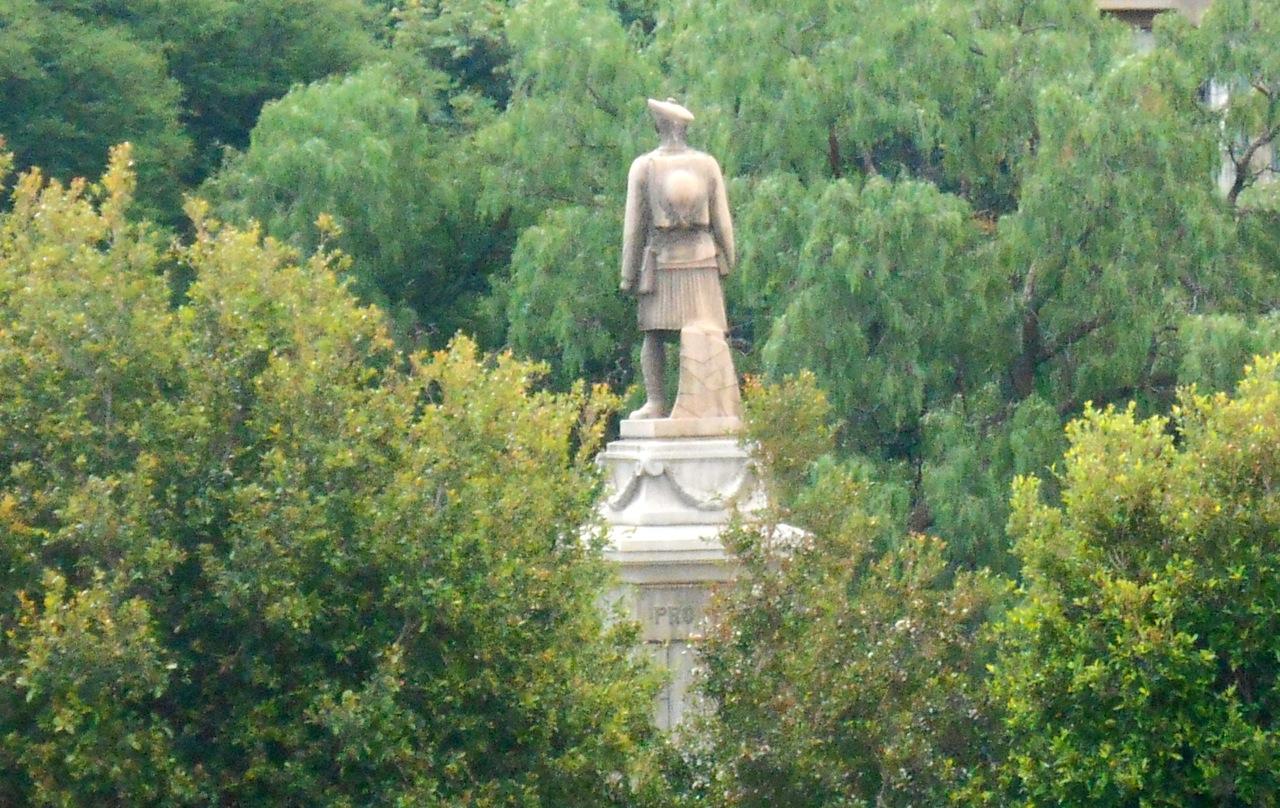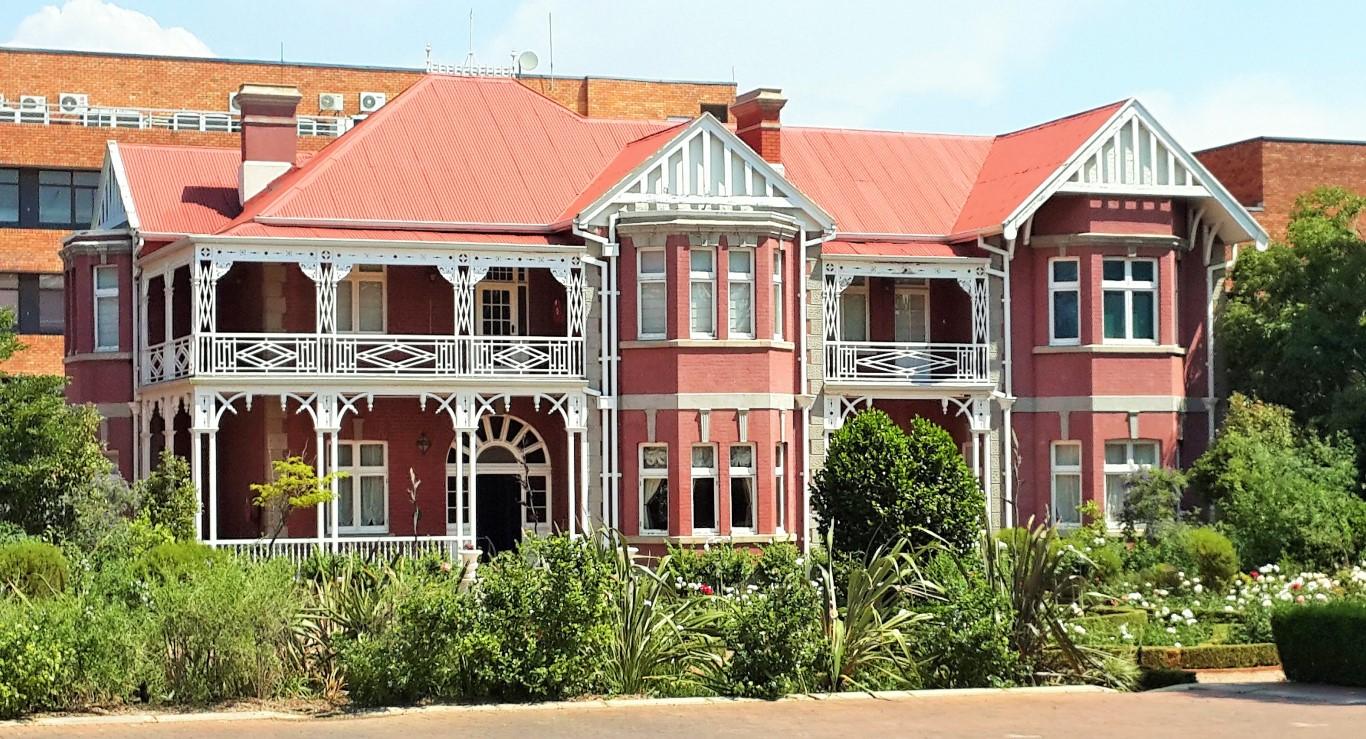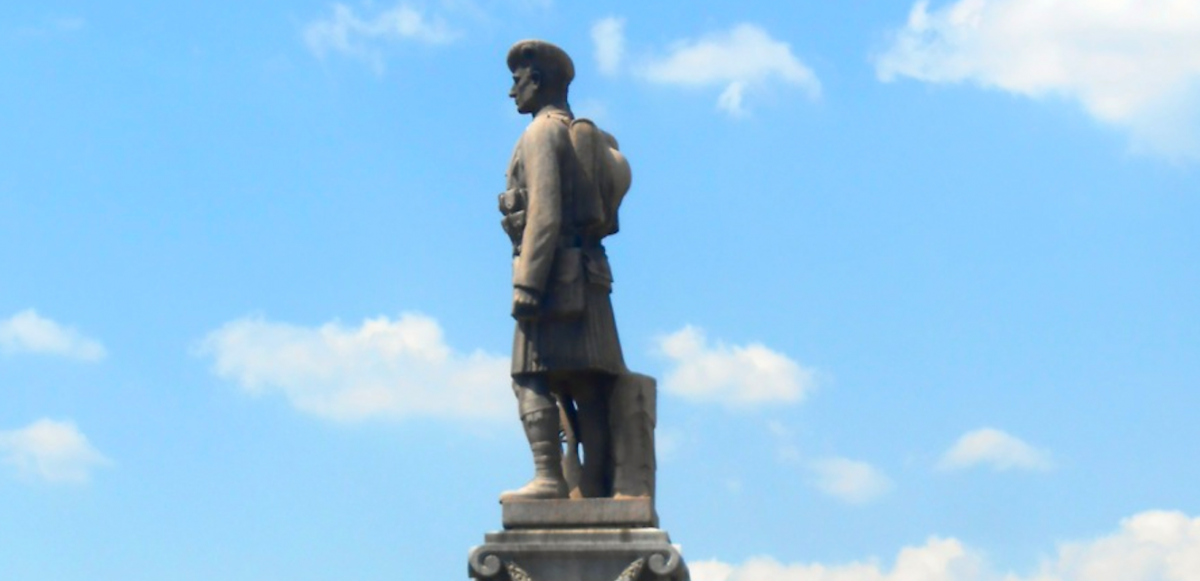
Disclaimer: Any views expressed by individuals and organisations are their own and do not in any way represent the views of The Heritage Portal. If you find any mistakes or historical inaccuracies, please contact the editor.
The sculpture shows a soldier in kilt and Scottish regalia. It fits in most dramatically with its position on a rising site on the triangular ground where St Andrew’s and Ridge Road meet. Visually it is very satisfying. It may not be a great work of art, but it is certainly a fine memorial, beautifully proportioned and well executed.
South African Scottish Memorial (The Heritage Portal)
The memorial was designed by William Tait Conner, a Scottish architect born in Glasgow who moved to Johannesburg in 1903 (click here for fascinating details from Artefacts). He served with the Transvaal Scottish in the First World War, attaining the rank of major. His partner A. Hamilton was killed in the conflict. Tait Connor won the competition to design the War Memorial in Boksburg, but gave his services freely for this work in 1922.
[NB - See the comments section for clarification on this paragraph] The sculptor was Arthur Taylor, who must have been a man of some eminence in Aberdeen. Alf Beattie, a member of the South African Scottish and a survivor of the Battle of Delville Wood, had known Taylor when he had grown up in Aberdeen. He wrote to his old friend and suggested he sculpt a SA Scottish soldier for the Memorial. He was asked to do this as a gift to the SA Scottish in recognition of their contribution. Taylor agreed and Alf Beattie sent him photographs of himself in uniform and full regalia, sending over his medals for the authentic touch.
Another view of the South African Scottish Memorial (The Heritage Portal)
But for the face of the soldier the SA Scottish wanted a hero. They sent Taylor photographs of Lieutenant Thomas Hesketh Ross. He had been one of the first to enroll in the Transvaal Scottish, served in the South West Africa Campaign, was awarded a Military Cross for his heroic conduct at the Battle of Delville Wood, but killed in action at the Battle of Arras.
Next Beattie persuaded the Scottish Rail that it was their patriotic duty to transport the sculpture from Aberdeen to Southampton. Then he spoke to his friend Chappie Chapman, a MOTH and manager of Union Castle Lines, to transport the sculpture to South Africa free of charge. After that Sir William Hoy, general manager of South African Railways, was talked into matching their generosity and the sculpture was brought from Cape Town to Johannesburg – again free of charge.
It was erected initially on the east side of King George Street immediately outside Joubert Park and across the bridge from St George’s Presbyterian Church in Noord Street where the Regimental Colours hung. It was unveiled on Easter Sunday, 1st April 1923 by H.R.H. Prince Arthur of Connaught, Governor General of the Union of South Africa and placed in the care of the City of Johannesburg.
Later it was moved to the west side of King George Street. It is probably at this time that the inscription to the Transvaal Scottish was added.
In 1993/4 representations were made to the authorities to move the soldier again because the immediate area had become a taxi rank and it was no longer possible to hold parades along King George Street. The City needed the space to provide facilities for the new use and agreed to move the memorial to another site. On 5th November 1994, it was re-dedicated and handed over to the City of Johannesburg in its new position.
The Memorial through the trees (The Heritage Portal)
The location in St Andrew’s Road was chosen because the memorial had been designed for street level and none of the other sites offered this scale and accessibility. St Andrew is the Patron saint of Scotland so the connection was appropriate. The memorial also stands almost across the road from The View, home to the Transvaal Scottish Regiment. The original Colonels and senior officers of both battalions had lived in Parktown so it was among friendly ghosts.
The View (The Heritage Portal)
Statement of Significance
The Scottish Memorial commemorates the service of South African soldiers in the First and Second World Wars. The men were proud of their Scottish origins, but equally so of being South African. The generosity of all those involved in its creation and transportation is remarkable and an indication of the esteem in which the contribution of South African soldiers was held both at home and abroad. The memorial is still used for commemorative parades. When the Colonel died it was draped in black so it remains meaningful to the members of the regiment and the local community. It contributes a sense of our multi-cultural heritage and a proud past of service. The kilt certainly fascinates people who have not encountered it before.
The excerpts above were taken from the City of Johannesburg's Inventory Form. Details were submitted to the COJ by the Johannesburg Heritage Foundation.
Comments will load below. If for any reason none appear click here for some troubleshooting tips. If you would like to post a comment and need instructions click here.

